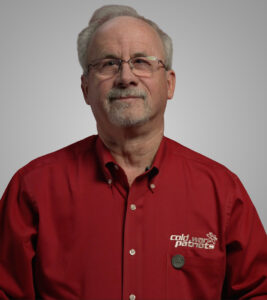
CWP Blog | CWP
The Many Faces of EEOICPA
November 20, 2024
November 20, 2024
CWP
CWP Blog
By Tim Lerew, Cold War Patriots Strategic Advocacy, Emeritus
The many faces of the Energy Employees Occupational Illness Compensation Program Act (EEOICPA) are as varied as our country itself.
Since the beginning of the Manhattan Project during World War II, until the present day, more than one million of our fellow Americans have worked in the nuclear weapons complex and uranium industries. And work they did, from just a few days to a lifetime of service to contribute to America’s national security and provide deterrence for global peace.
They did that work at more than 350 industrial, research, development and assembly sites, hundreds of uranium mines and mills, and over America’s highways moving radioactive materials and devices from place to place. That work required all manner of crafts, skills specialized training and dedication. The United States Department of Labor (DOL), which administers the Energy Employees Occupational Illness Compensation Program, maintains a database of hundreds of different specialized functions performed in connection with the production and maintenance of nuclear weapons, from construction day laborers to nuclear physicists.
Let’s look at some actual workers, their different kinds of work in the nuclear weapons and uranium industries, and perhaps you can see some of your own work experience in theirs. I’ve changed the names for their privacy, but each example is real.
Never Too Late to Apply
When it comes to nuclear weapons and uranium workers that have become ill due to their national security work, one of the interesting aspects of assisting these Cold War Patriots comes from meeting them face-to-face, often in their homes. That was the case when I met Howard and Maureen, who had recently celebrated their 60th wedding anniversary at the time we first met at their home in Grand Junction, Colorado. They told me of his work, right out of school, at the mountain-located company town of Uravan. It was named after the company that mined vanadium, a key component of stainless steel, and uranium, a by-product of that mining. Along came WWII and the Manhattan Project, and the priority became uranium mining, and Uravan was established. A little company town of about 700 workers and their families, including Howard, who worked as an assay chemist. Howard later developed breathing problems that he and his wife just did their best to cope with, and EEOICPA would not be signed into law and offer compensation and health benefits for another five decades. But that’s one of the special things about EEOICPA benefits – as long as there is a possibly work-related illness, and qualifying employment at a covered site, which Uravan is, then workers, or their surviving family members at any time can make a claim.
Overall, about half of EEOICPA claims are approved, which was indeed the case for Howard. He showed me the small, circular medallion lapel pin that he and other workers received at the end of World War II, honoring their work on the Manhattan Project. That original lapel pin would later be reissued by the U.S. Department of Energy and Cold War Patriots. I still wear mine proudly today. As he aged into his 90s, Howard eventually needed to use the comprehensive medical benefits that come with EEOICPA, and his in-home care enabled him to live independently after his wife passed away.
A Family Affair
Work in the nuclear weapons complex can often run in families. That was the case at The Mound, an advanced research laboratory facility in Miamisburg, Ohio. Scientists and workers there explored the properties and uses of plutonium, among other projects. Mound labs designed plutonium heat exchangers that generate electricity and have been in continuous use by the Voyager spacecraft, launched in 1977. People understand that plutonium is highly toxic, and the radiation it emits can cause cancer, yet that was not the concern that led a thoughtful “daughter of the Mound” to inquire about her niece’s early onset of Parkinson’s disease, with Peggy’s first symptoms appearing in her thirties. The Mound received and sent around the nuclear weapons complex many rare and potentially harmful radioactive isotopes that were a central part of its lab work. But it was difficult to find links from exposure to those usually well protected isotopes and Parkinson’s. This was in the early years of EEOICPA, and the U.S. DOL was still learning about the many toxic exposure related illnesses that can be caused or contributed to by nuclear complex and uranium work. In Peggy’s case, her aunt worked for years to research how her employment exposures could have caused her Parkinson’s. To their surprise, it turned out not to be the radioactive isotopes themselves, but the trucks that transported them. For safety and security, shipping and receiving of those special handling materials took place in an underground tunnel and shipping and receiving facility. The trucks would idle as they unloaded or received their special cargo. It turns out that Peggy’s job in shipping and receiving was exposing her to high levels of sulfur dioxide emitted from the vehicles exhaust. Peggy’s aunt was able to use the emerging scientific and medical research to establish a plausible work-related link to her Parkinson’s, and Peggy was awarded benefits, which she has used for several years to treat her illness and live with independence and dignity.
A Movie and New Mexico
It took release of the movie “Oppenheimer” for many Americans to become familiar with the pioneering work of the Manhattan Project on the high mesa of Los Alamos, New Mexico.
Today, the Los Alamos National Laboratory, or LANL, remains one of the original major Manhattan Project sites still actively working on essentially all aspects of America’s nuclear weapons complex. Following the end of the Cold War era, in the 1990s, many of the other major nuclear weapons research and production sites were closed, and often much of the work was moved to, and consolidated at, LANL in New Mexico. Indeed, today more than 16,000 people work at LANL now. Today’s safety environment is far more robust than what existed in the early years of atomic research and development. Nonetheless, the methods, materials, processes and assemblies still potentially expose workers to many toxic or radioactive substances which cause or contribute to life-threatening illnesses.
If you or your loved one have questions about qualifying for EEOICPA or how to apply, Cold War Patriots can help throughout the process. Call the Cold War Patriots Help Center to learn how to claim your EEOICPA benefits at 855-230-1339 Monday through Friday from 7 a.m. to 5 p.m. mountain time.

